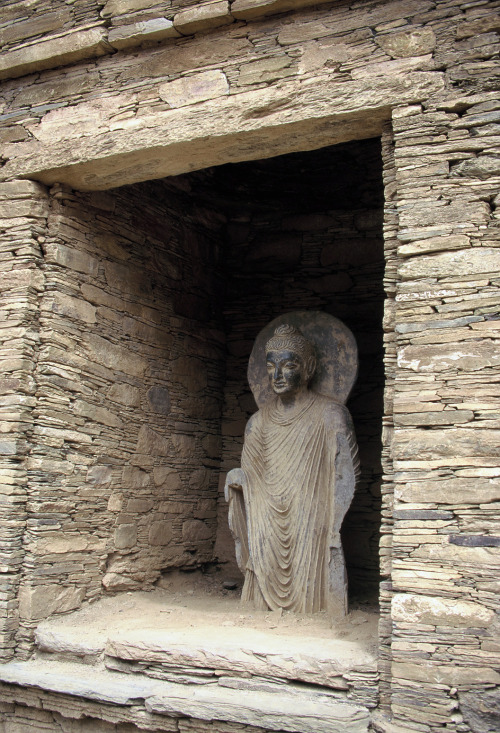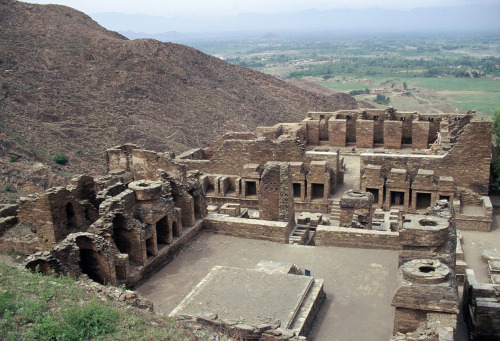ancientart:The Buddhist ruins of Takht-i-Bahi, Pakistan.As a young kid, I spent a few years liv
ancientart:The Buddhist ruins of Takht-i-Bahi, Pakistan.As a young kid, I spent a few years living in Peshawar in Pakistan, near the Afghanistan border. I managed to find a few old family photos taken at Takht-i-Bahi from during this time, and thought that i’d share. Takht-i-Bahi (Throne of Origins) is the remains of a Buddhist monastic complex -the best preserved and most impressive of its kind in the country. It sits high upon a 152m hill, about 80km away from Peshawar, and covers an area of around 33ha. It is dated to approximately the 1st century BC, and was occupied successively until about the 7th century AD, when it fell into disuse and disrepair. Fortunately, due to the site’s location on the crest of a hill, Takht-i-Bahi escaped the invasions of the Huns (and the like), thus remains in relatively good condition.The complex itself can be divided into 4 main groups. The first is the early monastic complex, which consists of an assembly hall, refectory, and an open court, surrounded by residential cells. Next is the so-called Court of Stupas (a stupa being a commemorative Buddhist monument usually containing sacred relics associated with the Buddha or saintly persons), which is adorned with a series of large niches to enshrine Buddhist statues. The temple complex contains similar niches, and has a main stupa in the middle of a courtyard. Finally, the tantric monastic complex has an open courtyard, which is next to a series of dark cells for meditation. On the basis of existing structures, it has been estimated that Takht-i-Bahi was once home to a monastic population of about 250-350 residents.Photos taken by B. Kelly. When writing up this post UNESCO’s listing of the site was of use. -- source link
Tumblr Blog : ancientart.tumblr.com

